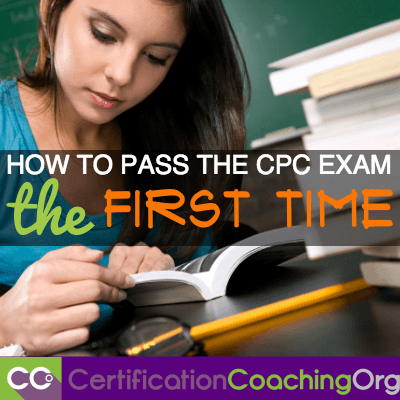Test Taking Tips and Strategies
CCO Club members & students have access to the Bonus & Reference Material in the CCO Community.
If you're taking too long to answer questions, you need to review Laureen's videos on Time Management, The Art of Skipping and Process of Elimination. These methods will improve those skills.
The Test Taking Tips area is located here.
Also, please make sure you're taking timed practice exams. If you're finishing them with a score of 85% of higher and within time, then you're ready for the exam. You can see our full process explained here: https://www.cco.us/cco-proven-process/ It should take you one hour to complete 25-30 questions. And if you have to, try taking a small, digital kitchen timer so you can keep track of time during the actual test.
We have many free Practice exams available at this link.
We have paid Practice Exams available at https://www.cco.us/ under the Practice Exam menu item.
Practice Exams by the AAPC are also available.
How To Pass The CPC Exam Tips & Strategies
In today's post, we’ll show you how to pass the cpc exam without stress by giving you general preparation tips and test taking strategies so you are 100%
CPC Exam Tips — 20 Tips for Passing the CPC Exam
Follow these 20 CPC exam tips to guide you through — from preparing for the CPC exam, test taking strategies during the exam to passing the CPC exam on...

Top Ten CPC Exam Tips
Top Ten CPC Exam Tips. If you have prepared your manuals for easy exam reference and can pass timed practice exams you are ready.

Helpful Tips For The CPC Exam | CCO Medical Coding
Helpful Tips For The CPC Exam — What’s the best advice another CPC can give a future CPC? The answer is simple! Know your material. When preparing for...

How To Pass The CPC Exam The First Time
Here are some tips for you on how to pass the CPC exam the first time. After all, the exam is open book right? You just need to get organized, focus on...
CPC Exam Tips — 20 Tips for Passing the CPC Exam
Follow these 20 CPC exam tips to guide you through — from preparing for the CPC exam, test taking strategies during the exam to passing the CPC exam on...






